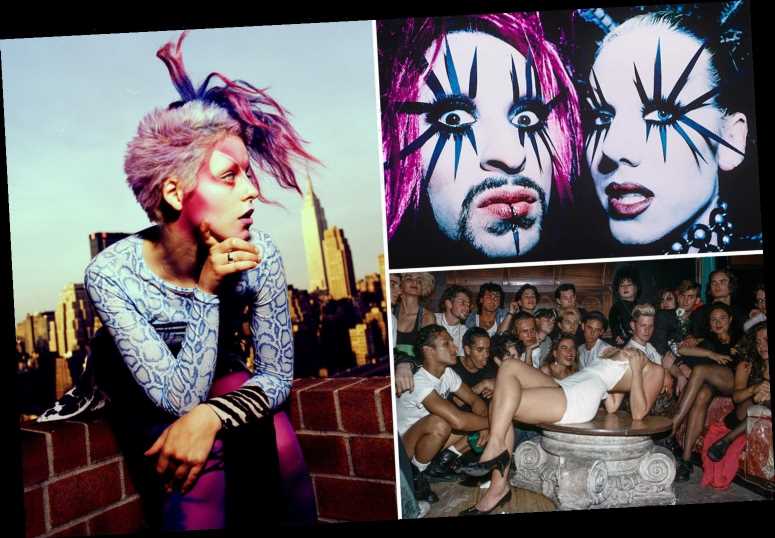A NEW collection of photos reveal the outrageous antics of the so-called 'Club Kids' who dominated the New York City party scene in the 1990s.
Visual artist Walt Cassidy, who partied with the Club Kids, documented the uniquely self-indulgent era of nightlife through provocative images in his book New York: Club Kids.
In addition to his own works, the book features archived pics from other respected photographers, television screenshots, and other images culled from magazine memorabilia and books.
Much of the material presented in the 47-year-old photographer's book was previously unreleased.
The term 'Club Kid' was first coined by journalist Michael Musto in a 1988 Village Voice article, where he detailed the group's "Cult of crazy fashion and petulance."
"They…are terminally superficial, have dubious aesthetic values, and are master manipulators, exploiters, and, thank God, partiers," he wrote.
Dressed in full makeup and elaborate costumes, the Club Kids were regularly featured in magazine editorials, fashion campaigns, music videos and even appeared on daytime television shows.
Their androgynous, gender-bending style defined the Generation X subculture that became a nationwide obsession of the decade.
The Club Kids' sexually liberal and self-promoting ways influenced the third-wave feminist movement as well as the drag scene of the early '90s, and foreshadowed the influencer culture of today.
The photographer, who goes by the moniker Waltpaper, described how he and other socialites would cobble together their complex "throwaway" costumes using hot glue and other craft supplies.
Their outrageous events even attracted big names of the time like Icelandic singer Björk, who invited the Club Kids to party with her on stage at the famed Roseland Ballroom in 1992, according to Cassidy.
"Looking back at it, it was natural that Björk gravitated toward our scene," he told Interview Magazine in September.
"We were really outrageous, and she fit right in."
Cassidy he wants readers of his book to see it as a corrective to the association with the 1996 murder of Andre "Angel" Melendez by de factor Club Kid leader Michael Alig.
"I would say a lot of the community felt our experience of the time was hijacked by that 'Party Monster' narrative," he said last September.
"That's not the New York I knew. That narrative doesn't include the creativity, vibrancy, and cultural impact I experienced."
Alig spent 17 years in prison for killing Melendez, a drug dealer, and dismembering his body before tossing his mutilated corpse in Manhattan's Hudson River.
When asked why he committed the murder, the nightlife legend said he didn't know and that the killing "was not done on purpose."
"No, there is no reason," Alig told Rolling Stone in 2017.
"Not only is there no reason, there's no justification. The actual killing was not done on purpose."
Source: Read Full Article














